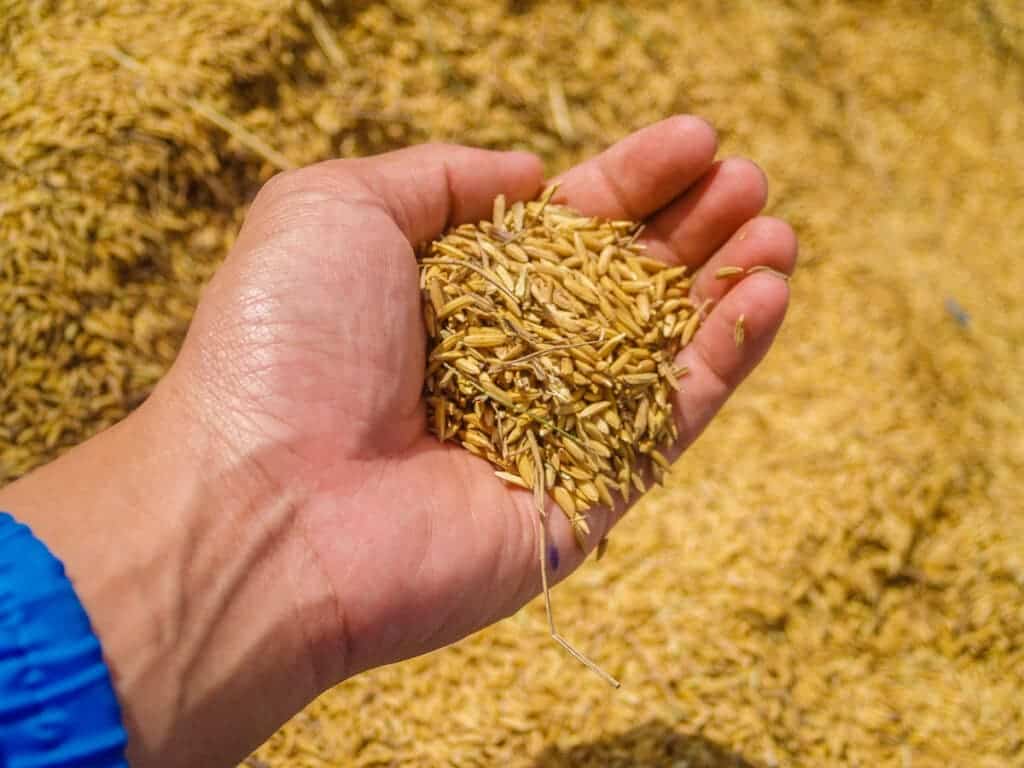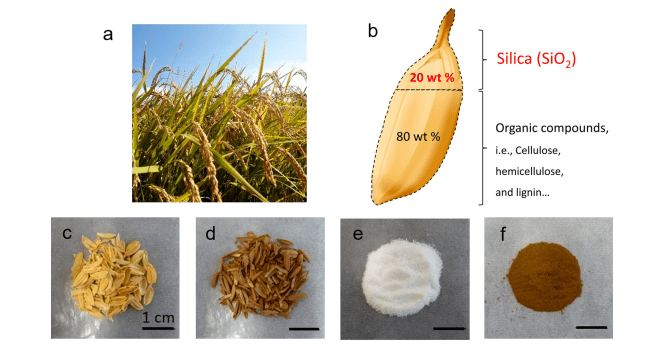Quantum dots (QD) are a big thing in electronic design. They’re semiconductors regarded as ideal light emitters for current and next-generation displays. However, their costs can be high, and producing them is taxing on the environment as well. Now, researchers at Hiroshima University have found a way forward, developing a mechanism to recycle rice husks, a byproduct of rice, to create a QD LED light.

A product of nanotechnology, quantum dots are generally built from nanometer-sized particles of a semiconducting material like cadmium selenide. They are 2,000 to 20,000 times smaller than the width of a human hair and are designed to absorb light of one color and emit it as another one. This makes them an excellent fit for use in products like TVs and tablets.
What’s unique about quantum dots is that the color of the emitted light can be modified by changing the size of the particles. And as this color shifting is a physical phenomenon, this means QDs outperform other chemicals such as phosphor in brightness, color, and durability. Simply put, they make for brighter, better screens. But there’s a big cost, both environmental and in terms of human health.
The heavy metal cadmium, classified as carcinogenic by the International Agency for Research on Cancer, is often used in the production of quantum dots. Toxicologists and regulators have been raising concerns about the health and environmental toll of engineered nanoparticles such as QD for years, but research is still developing.
But there could be a better way. Ken-ichi Saitow from Hiroshima University has turned to waste rice husks to fabricate QD with a positive environmental impact and a lower cost. This is because rice husks contain approximately 20% silica in amorphous form, used to manufacture QD. The rest of the rice husk is volatile matter (60%), fixed carbon (10%), and ash (10%).
“Since typical QDs often involve toxic material, such as cadmium, lead, or other heavy metals, environmental concerns have been frequently deliberated when using nanomaterials. Our proposed process and fabrication method for QDs minimize these concerns,” Saitow, a chemistry professor at Hiroshima University, said in a statement.
Rice husks and LED light

Husks (or hulls) are the protective covering of seeds and grains like rice. They protect the seed during the growing season and are then typically discarded when the grain is milled. It’s a bulky material, with rice husk accounting for 20% of the volume of a rice paddy harvest. That’s why farmers have long been trying to find ways to dispose of it — or even better, use it to create something.
The properties of rice husks make them perfect as a renewable source of fuel and for inclusion in materials like cement, wall and roof insulation, and composites such as particleboard. In Myanmar, for example, where rice is grown extensively, the husk is used in biomass gasification power plants to help electrify villages across the country.
The team at Hiroshima University used a combination of chemical etching, heat treatments, and milling to process the rice husk silica. They milled rice husk and extracted silica powder, which was heated in a furnace to obtain porous silicon. This was then further reduced in size to three nanometers by using chemical etching.

“This is the first research to develop an LED from waste rice husks,” Saitow said in a statement, adding that the non-toxic quality of silicon makes them a good alternative to current semiconducting QD available today. “The present method becomes a noble method for developing environmentally friendly quantum dot LEDs from natural products.”
The researchers assembled the LEDs using a series of material layers, including indium-tin-oxide (ITO) glass substrate as the LED anode – a good conductor of electricity while transparent enough for light emission. Other layers were spin-coated onto the ITO glass. The material was coated by the researchers with an aluminum film cathode.
Looking ahead, the team at Hiroshima University wants to develop higher efficiency luminescence in the LEDs. They will also work on the possibility of applying the same method to other plants, such as wheat, barley, bamboo, or gasses. Ultimately, they would like to commercialize this environmentally-friendly approach to QD LED light.
The study was published in the journal ACS Sustainable Chemistry & Engineering.


